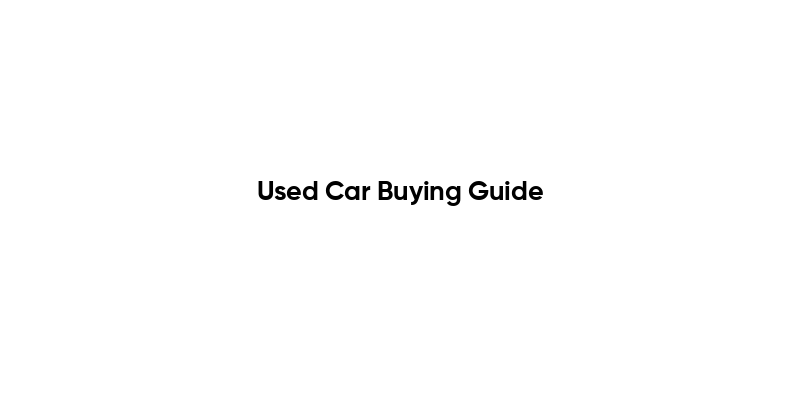Understanding Your Budget
When embarking on your journey to purchase a used car, the first step is to establish a clear budget. This budget should encompass not only the purchase price of the vehicle but also additional costs such as taxes, registration fees, insurance, and potential maintenance expenses. By understanding your financial limits, you can avoid overspending and ensure that you are making a sound investment.
It is also advisable to consider financing options if you are not paying in cash. Many dealerships offer financing plans, but it’s essential to compare interest rates and terms from various lenders. This will help you find the best deal and keep your monthly payments manageable. Remember, a well-planned budget is crucial for a successful used car purchase.
Researching Vehicle History
Before finalizing a purchase, it is vital to research the vehicle’s history. Services like Carfax or AutoCheck provide detailed reports that include information about previous ownership, accident history, and service records. This information can reveal potential red flags that may affect the car’s reliability and resale value.
Additionally, checking for any outstanding recalls is important. A vehicle with unresolved safety recalls can pose risks to you and your passengers. By thoroughly investigating the vehicle’s history, you can make an informed decision and avoid costly surprises down the road.
Inspecting the Vehicle
Once you have narrowed down your options, the next step is to inspect the vehicle thoroughly. This includes checking both the exterior and interior for any signs of damage or wear. Look for rust, dents, and paint inconsistencies, as these can indicate previous accidents or poor maintenance.
It is also advisable to take the car for a test drive. Pay attention to how the vehicle handles, listen for unusual noises, and check the functionality of all features, including brakes, lights, and air conditioning. If you are not confident in your ability to assess the car’s condition, consider hiring a professional mechanic to conduct a pre-purchase inspection.
Negotiating the Price
Negotiation is a critical aspect of buying a used car. Once you have done your research and inspected the vehicle, you should have a good idea of its market value. Use this information to negotiate a fair price with the seller. Be prepared to walk away if the terms do not meet your expectations, as there are plenty of other options available.
Additionally, consider the timing of your purchase. Buying at the end of the month or during holiday sales can often lead to better deals, as dealerships may be eager to meet sales quotas. Remember, effective negotiation can save you a significant amount of money.
Finalizing the Purchase
After reaching an agreement on the price, it’s time to finalize the purchase. Ensure that all paperwork is in order, including the title transfer and bill of sale. Verify that the seller has cleared any liens on the vehicle, as this can complicate ownership transfer.
Before driving off, make sure to obtain insurance coverage for your new vehicle. This is not only a legal requirement in most states but also protects your investment. Once everything is settled, enjoy your new ride and remember to keep up with regular maintenance to ensure its longevity.
| Step | Description |
|---|---|
| 1. Determine Your Budget | Assess your finances to establish a budget for the purchase, including taxes, registration, and insurance. |
| 2. Research the Market | Investigate different makes and models that fit your needs and budget. Use online resources to compare prices. |
| 3. Check Vehicle History | Obtain a vehicle history report using the VIN to check for accidents, title issues, and service records. |
| 4. Inspect the Car | Conduct a thorough inspection of the vehicle, checking for any signs of damage or wear. Consider hiring a mechanic. |
| 5. Test Drive | Take the car for a test drive to assess its performance, comfort, and handling. Pay attention to any unusual noises. |
| 6. Negotiate the Price | Use your research and inspection findings to negotiate a fair price with the seller. |
| 7. Review the Paperwork | Ensure all necessary documents are in order, including the title, bill of sale, and any warranties. |
| 8. Finalize the Purchase | Complete the transaction by signing the paperwork and making the payment. Ensure you receive all keys and documents. |
| 9. Register the Vehicle | Register the car in your name with the local DMV and obtain insurance before driving it on public roads. |



